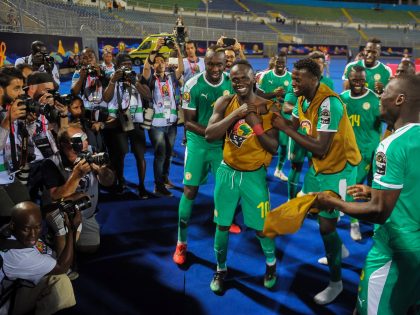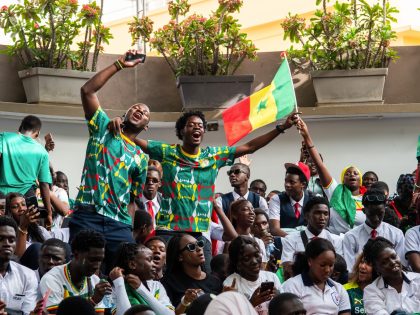African inequality rising
Every country in Africa is today less equal than it was in 2010; for the African masses the trickle-down benefits of economic growth have been relatively small.

Bean harvest in Ethiopia. Image via Wikimedia Commons.
Witness Nigeria. The African goliath has in recent years climbed steadily through the ranks of the UN’s Human Development Index, a global index of key development indicators such as income, literacy and life-expectancy. But Nigeria’s success in the HDI disguises a widening gulf between the haves and the have-nots. In fact, when Nigeria’s latest placement in the index is adjusted for income inequality, it falls nine places – three more than in 2010. In other words, the living standards of the Nigerian elite have raced far ahead of the quality of life of the majority.
Indeed, according to the HDI, every country in Africa is today less equal than it was in 2010; for the African masses, in other words, the trickle-down benefits of economic growth have been relatively small. But the story of inequality in Africa is more complex than that of a widening gulf between the very rich and the very poor. African Women, in particular, have shouldered a disproportionately heavy burden. The UNDP estimates, for example, that African women earn only seventy cents on their male peer’s wage dollar, and attain only 87 per cent of the development outcomes of men.
The causes of rising inequality in Africa are a matter for debate. But as Branko Milanovic shows in his excellent book Global Inequality – as in the West, so in Africa, the concentration of wealth in the hands of the few is a long-run global trend. As Milanovic and others argue, Africa’s recent lurch towards inequality is, as it were, the “natural” outcome of an increasingly capital-driven market economy. But the markets which have emerged in the last two decades are not spontaneous or organic creations; they have architects.
Major Western donor governments and international lending institutions, in particular, spearheaded neoliberal reforms in Africa which spur headline GDP growth but drive inequality. While Western governments unraveled the welfare state in their own countries in the 1980s and ‘90s, they forced their African counterparts to emulate their retrenchment agenda through loan and aid conditions. Under the influence of Western donors, austerity became African leaders default coping mechanism for periods of global economic stress.
The cure for economic stagnation, in other words, became the cause of a new pathology: austerity. Never was this truer in Africa than after the 2007-08 financial crisis. World demand for Africa’s exports collapsed, Foreign Direct Investment fell away and the cost of servicing dollar-debt rose after the 2007-2008 financial crisis; African governments responded – as their western creditors insisted – with spending cuts. The cut-backs buoyed macro-economic growth rates, but entrenched inequality, so much so that the IMF acknowledged it had overestimated the value of structural adjustment.
Increasingly, development in the form of retrenchment and chasing GDP growth has become a kind of madness: the cure for poverty creates more obstacles to economic growth than it overcomes. In Ethiopia, for example, officials post 12% annual GDP growth rates, while tens of millions of Ethiopians find themselves on the cusp of starvation. As René Lefort observed, the cause lies not in Ethiopia’s levels of food production – the country produces enough cereal to feed the entire population – but in the disproportionate impact poor harvests and price rises have on Ethiopia’s agricultural wage-laborers.
By prioritizing high-yield, industrial agricultural practices and diverting resources to manufacturing, the EPLF – Ethiopia’s ruling party – has left great swathes of the population to starve without access to land or income. But such extreme inequality has driven popular protest in Ethiopia in recent months, which has shut down factories, stalled foreign investment and crippled infrastructure.
Is Ethiopia a bellwether, a portent for Africa for the year ahead? It is an extreme case: its growth has been headier, its government’s commitment to development goals steelier than that of other African countries. But Ethiopia is not unique. This is an election year for a number of large African economies, including Angola, Algeria, Kenya, Rwanda and Sierra Leone; each faces a cocktail of falling commodity prices, international economic headwinds, isolationism and domestic polarization. As Joseph Warungu writes, many African governments enter 2017 in defensive mode. As events in Ethiopia, the US and Europe in 2016 have hinted, the fall-out from rising inequality promise to be problematic – as much in Africa as in the West.



















